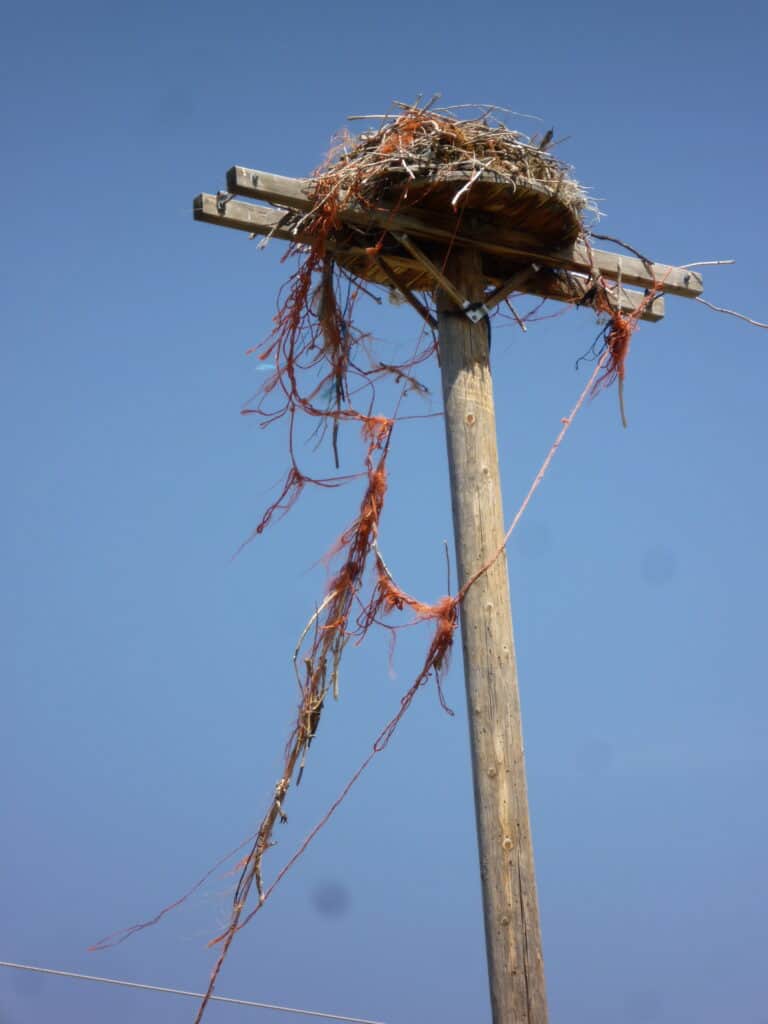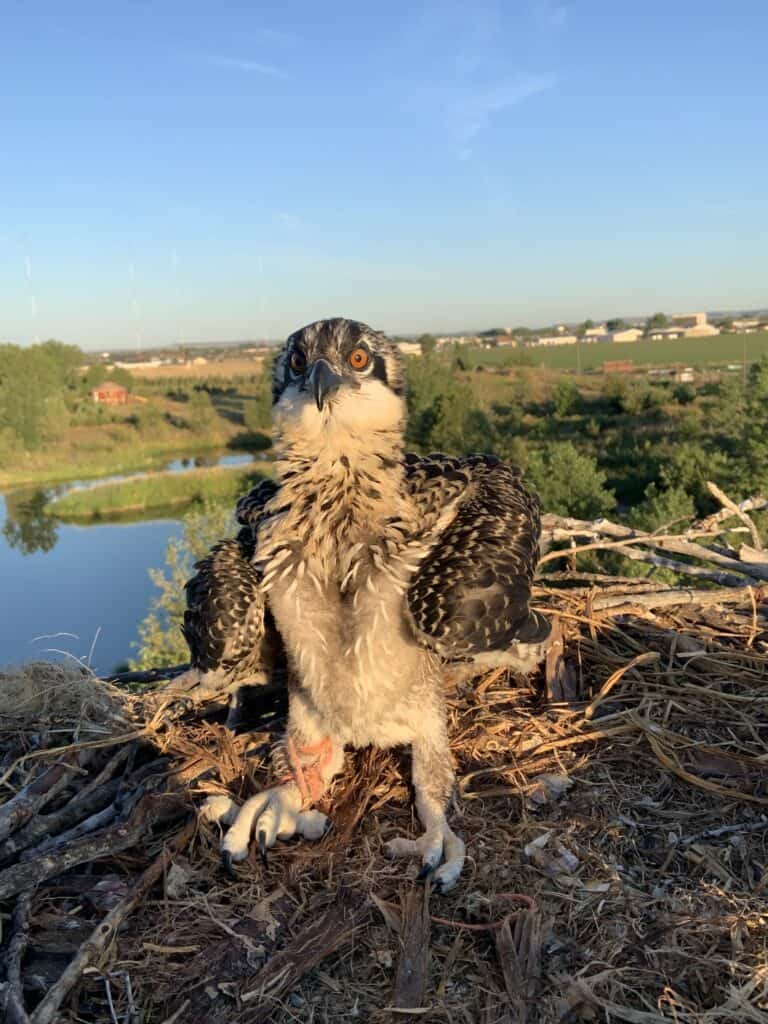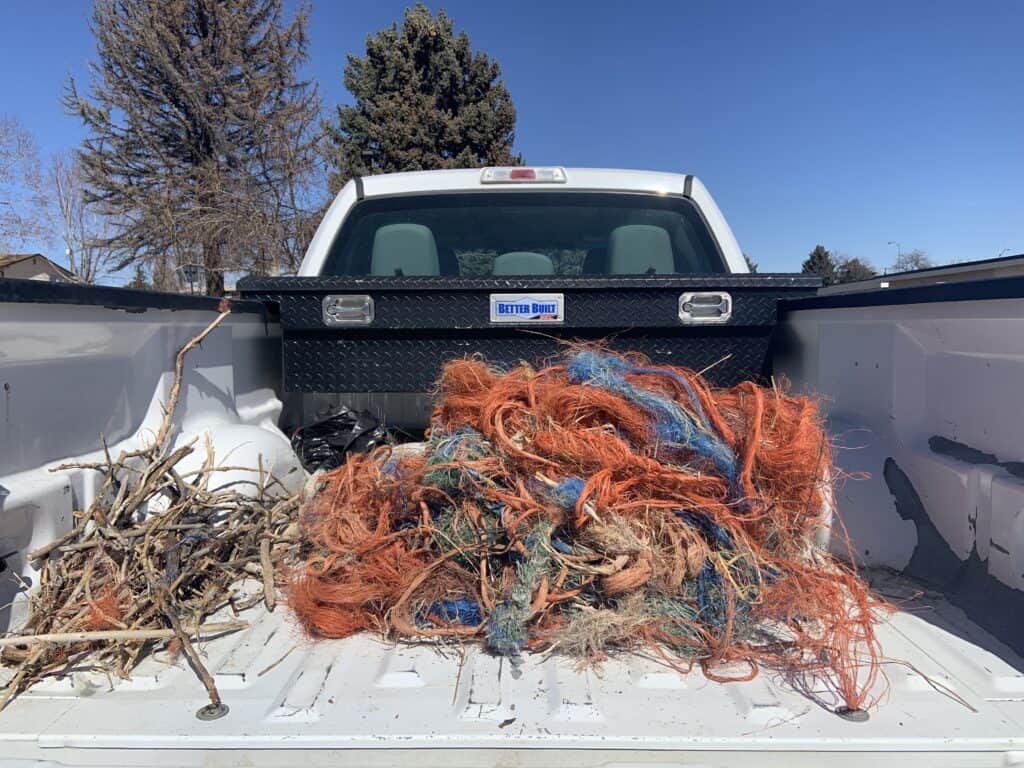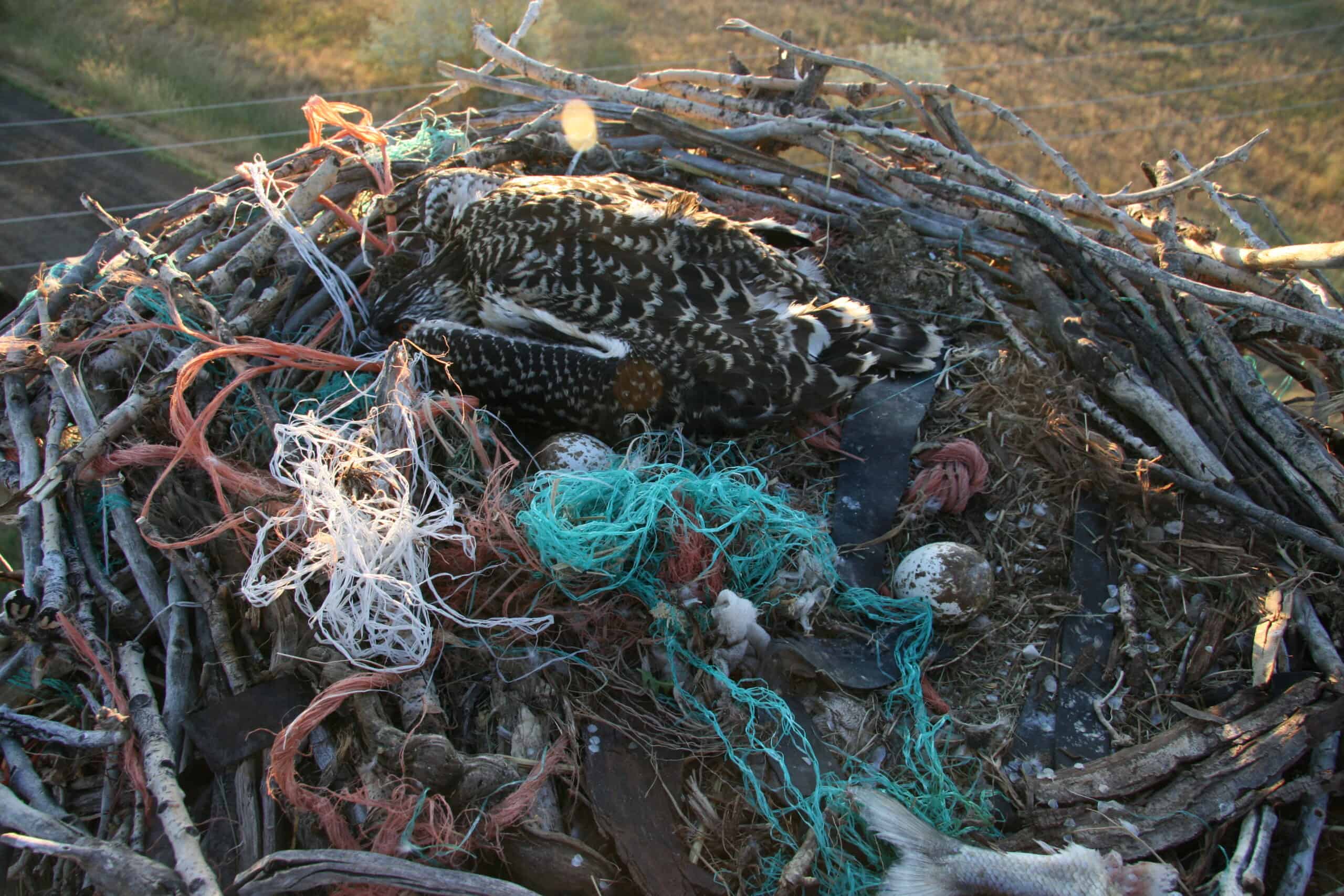Share this article
Wildlife Featured in this article
- Osprey
- Common raven
- Bullock's oriole
Plastic twine is killing osprey chicks
Ospreys pick up material used in haybales for nesting material
Plastic twine used to bind hay bales is killing osprey chicks along the Yellowstone River in Montana.
“The stuff ends up in the environment and ospreys for some reason like to pick it up and put it in their nests,” said researcher Marco Restani.
Members of the Yellowstone Valley Audubon Society were already observing osprey in the area as part of a long-term project. For a study published recently in Global Ecology and Conservation, Restani, who was a biology professor at St. Cloud State University in Minnesota at the time, took advantage of Audubon’s eyes to survey the effect of this plastic twine on osprey survival.
“When baling twine frays, it’s a lot like dental floss—thin and very strong,” said Restani, who is now a wildlife biologist at Northwestern Energy in Montana. “Most ospreys entangled in twine are unable to get it off.”

Restani and the volunteers surveyed about 600 kilometers along the river from 2014 to 2022, recording twine whenever they found it in osprey (Pandion haliaetus) nests.
They found twine in an average of 44% of the nests they surveyed every year. Ospreys will pick the stuff up on purpose to use it in their nests—one of several human-made materials they use for building materials. The raptors have been observed incorporating everything from shredded tire rubber to clothing to barbed wire.

These artificial materials help reinforce their nests, but they can cause problems for the chicks inside, which sometimes get tangled up. Restani found that an average of 3.4% of the nestlings they surveyed each year became entangled by twine.
In some cases, it strangles them. “They would all die if me or someone else didn’t cut them out,” he said. “About half I see entwined are already dead when I get to them.”
In other cases, the twine can wrap around parts of their bodies and cut into them as they grow, causing infections that become fatal.
“It’s a slow death,” Restani said.
Ospreys may not be the only species being affected. Other birds, like Bullock’s orioles (Icterus bullockii) and common ravens (Corvus corax) also sometimes build nests out of this material.
“Today, birds are incorporating all kinds of human artificial materials into their nests across the globe,” Restani said.
The long-term solution is getting plastic baling twine out of the environment. But as this may be difficult to do, improving recycling opportunities for farmers, who often bury the twine or burn it, could help. ‘There has to be a way to make it easy for ranchers to get rid of the stuff,” he said.

Header Image: An osprey lays down in a nest full of baling twine. Credit: Marco Restani








